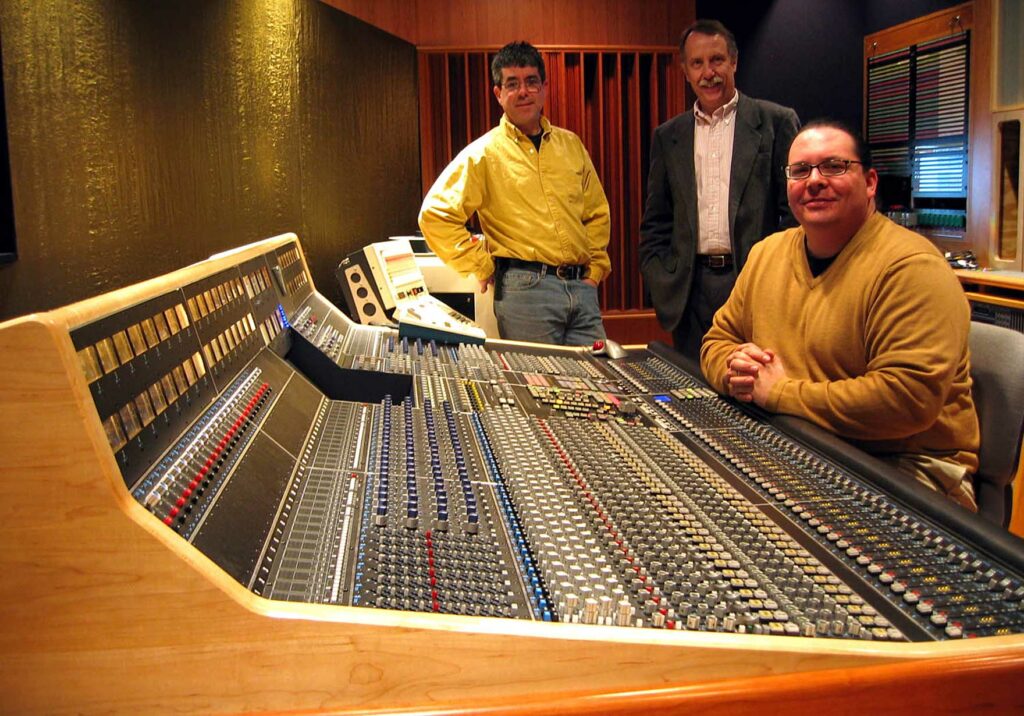Lowell, Massachusetts:
The Sound Recording Technology department at the University of Massachusetts Lowell offers one of the nation's premier programs for training in professional audio for music, screen, games, and related industries. In addition to 130 undergraduates, the program is home to six graduate students seeking a masters of music degree in sound recording technology, the first degree of its kind offered in the United States.
"Our program looks at technology as a means for musical and creative expression," explained Dr. William D. Moylan, faculty member and coordinator for the program. "Technology must be understood in order for this to effectively take place. Therefore, our students take calculus, physics, electrical engineering and computer science course work, as well as music studies, to create a strong and meaningful context within which recording production, technologies, and critical listening can be studied with significant depth and sophistication."
The program keeps students absolutely current with respect to the technology that they learn to harness and, more importantly, with respect to the way they think about audio. While surround sound has become the preferred format for audio in many different media, its gradual ascension has only sometimes come at the expense of the tried and true stereo format. Unlike CDs and cassette tapes, of which there was one clear winner, surround sound and stereo are both here to stay.
Moylan and his colleagues recognized the relevance of these two formats for their students. "We are very much working at getting students to think in surround and to think in stereo. Getting students to be fluent in both, to understand their differences, their characters, and their potential applications is vital to their futures." Given its importance, the department renovated an existing control room in their facilities to make it compatible with surround sound. While the upgrade included a new set of SLS loudspeakers to add to an Otari MTR 24-track analog deck and the usual complement of digital audio workstations, the centerpiece of the new room was a 48-channel API Vision console.
When asked why they selected the API Vision, Moylan responded, "The API Vision console is the only high-end analog console that is readily equipped for both surround mixes and stereo mixes. Since API has been revered for the quality of their analog signal chain forever, it was an easy choice." The Vision features three stereo mix busses, a dedicated five-channel surround mix buss, 24 main busses and ten auxiliary busses. Each channel features two full throw motorized faders. Panning is achieved with three pots adjacent to each fader: a mode-switchable LR/LCR pan, a front-rear fader pan, and a rear channel pan. Since all the busses are active, students can simultaneously mix in stereo and surround, and an intuitively-designed monitoring section allows for easy A/B-ing of the two formats. API's Instant Reset Switch System preserves mixes and makes it easy for a class or a student to pick up a mix where it was left off.
The students have put the API Vision through its paces since its installation in November 2006. Explained graduate student Becky ZuWallack, "Dr. Moylan assigned independent projects at the beginning of the semester in his Production Practicum course, with a completion date during finals week. The object was to record a song and produce four different mixes – two stereo and two surround. The first stereo mix and the first surround mix were to be planned and executed independently. Once those were completed, the additional stereo mix was to be made using the existing surround mix as a starting point and, vice versa, the additional surround mix was to be made by starting with the existing stereo mix. In addition to getting experience recording and mixing for both stereo and surround, we learned how to translate between the two formats."
The new console is also the centerpiece of the program's undergraduate Multitrack Production and Advanced Multitrack Production courses. Recognizing that many of his students will find jobs where the audio they deal with never leaves a computer, Moylan has reflected on his choice of an analog console for these two senior-level, capstone classes. "We find that students gain a much deeper understanding of signal routing, general workflow, and gain staging on an inline console like the Vision. The knowledge that they gain working with the Vision can be easily applied to a digital audio workstation."
A large component of what the department found so attractive about the API Vision was that its sound quality is excellent, irrespective of its ability to mix in multiple formats. Said Moylan, "One of the distinguishing components of our curriculum is the ability to listen critically and to recognize very subtle alterations in sound. That's where the API excels. Its clarity allows my students to hear very small changes and to understand how the recording process alters sound."
For the very first exercise of its type using the API Vision, Moylan's graduate students researched differences in sound quality among microphones. They recorded a single acoustic guitar player with ten microphones on separate tracks, holding everything else constant. Then they were able to listen back to the recordings and A/B all of the microphones against each other. Of course, some of the differences were large and obvious, but many were subtle and nuanced. Where a lower-quality console would have blurred the distinctions, the API Vision allowed them to pick out and articulate even the smallest differences.
